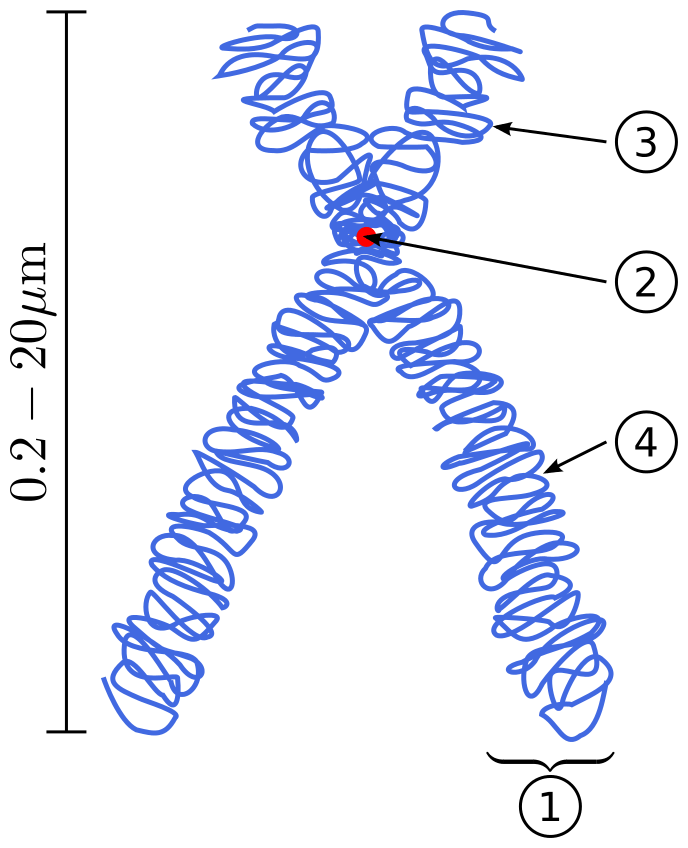Difference Between Linear and Circular DNA
Table of Contents
Key Difference – Linear vs Circular DNA
Deoxyribose nucleic acid (DNA) is the main form how most organisms store their genetic information. Hence, the structure and functions of DNA are very beneficial. DNA can be mainly found in two forms; the linear form and the circular form. Linear DNA is the form of DNA present in the eukaryotic nucleus and is composed of two free ends. Circular DNA is predominantly found in prokaryotes, whereas the mitochondria, chloroplast and plasmids also contain circular DNA. Circular DNA is found in the cytoplasm of the prokaryotic cell, in mitochondria or in the chloroplast. The key difference between the linear and circular DNA is the structural conformation of the molecule. Linear DNA attains an open configuration with two free ends, whereas circular DNA attains a closed conformation with no free ends.
CONTENTS
1. Overview and Key Difference
2. What is Linear DNA
3. What is Circular DNA
4. Similarities Between Linear and Circular DNA
5. Side by Side Comparison – Linear vs Circular DNA in Tabular Form
6. Summary
What is Linear DNA?
Linear DNA is present in the eukaryotic genomes within the cell nucleus. The linear DNA is composed of two free ends, and therefore it is an open structure. Linear DNA can be isolated and separated on agarose gel media, although due to the bulkiness of the DNA, a smear would be observed on the gel. In order to isolate and separate desired fragments of linear DNA, the DNA can be cut using restriction endonucleases and then observed on a gel run.

Figure 01: Linear DNA
Replication process of linear DNA is a much complex process as it involved a lot of mechanisms. The replication takes place in a bidirectional manner, where two replication forks are formed. Linear DNA may contain many origins of replication sites, as the linear DNA is much long and complex. Replication procedure continues until the termination takes place upon the solving of the end termination problem as linear DNA is composed of telomeric sequences.
What is Circular DNA?
Circular DNA is one conformational arrangement of DNA where it attains a closed structure. Circular DNA does not have any distinct ends. Circular DNA is found in almost all prokaryotes with a few exceptions, in the mitochondria and the chloroplast of the eukaryotes and in plasmids. Circular DNA is situated in the cell cytoplasm of the prokaryotes. Circular DNA can exist in different forms including supercoiled forms and nicked circular DNA forms. When circular DNA is isolated and separated by agarose gel electrophoresis, different forms of circular DNA can show different migration properties on the gel.
Plasmid DNA also termed as extrachromosomal circular DNA present in some microorganisms have shown to possess great benefit in the fields of molecular biology and genetic engineering. Plasmids are commercially synthesized and are used as vectors in molecular cloning. Some examples of plasmid vectors are pBR322, pUC18.

Figure 02: Circular DNA
The replication of circular DNA is greatly varied in comparison to the linear DNA. During the replication process, only one origin of replication is present, and due to its circular nature, replication can take place in a unidirectional manner with the formation of a single replication fork.
What are the Similarities Between Linear and Circular DNA?
- Both linear and circular DNA are composed of Deoxyribose nucleic acids containing adenine, guanine, cytosine and thymine nucleotides.
- Both linear and circular DNA have a double-stranded helical structure.
- Both linear and circular DNA determine the genetic characteristics of organisms.
- Both linear and circular DNA can be separated using agarose gel electrophoresis methods.
- Both DNA forms can be amplified using molecular techniques such as Polymerase Chain Reaction.
- Both linear and circular DNA are commonly used in DNA based diagnostics and in applications in genetic engineering.
What is the Difference Between Linear and Circular DNA?
Linear and Circular DNA | |
| Linear DNA is the form of DNA present in the eukaryotic nucleus and is composed of two free ends. | Circular DNA is the DNA having a closed conformation and found in the cytoplasm of the prokaryotic cell, mitochondria or chloroplast. |
| Distribution | |
| Linear DNA is found in the nucleus of eukaryotes. | Circular DNA is found in the cytoplasm. |
| Replication | |
| Replication of linear DNA has many origins of replication, and it is a complex process. | Replication of circular DNA has a single origin of replication, and it is a simple process. |
Summary – Linear vs Circular DNA
Linear and circular DNA are the two main forms how DNA is distributed in eukaryotic and prokaryotic cells respectively. Linear DNA is found in the nucleus of eukaryotes and is composed of two free ends and complex sequences. Circular DNA is found in prokaryotes and also in mitochondrial and chloroplast DNA that has a closed conformation. Both the forms of DNA are used widely in molecular biological and genetic engineering studies. This is the difference between linear and circular DNA.
Download the PDF of Linear vs Circular DNA
You can download the PDF version of this article and use it for offline purposes as per citation note. Please download the PDF version here: Difference Between Linear and Circular DNA
Reference:
1.“Eukaryotic DNA replication.” Wikipedia, Wikimedia Foundation, 23 Jan. 2018. Available here
2.“Circular bacterial chromosome.” Wikipedia, Wikimedia Foundation, 16 Jan. 2018. Available here
Image Courtesy:
1.’Chromosome’By Dietzel65 (CC BY-SA 3.0) via Commons Wikimedia
2.’Mitochondrial DNA lg’By National Human Genome Research Institute – National Institutes of Health. National Human Genome Research Institute. “Talking Glossary of Genetic Terms.” November 17, 2016, (Public Domain) via Commons Wikimedia
ncG1vNJzZmivp6x7pbXFn5yrnZ6YsqOx07CcnqZemLyue8OinZ%2Bdopq7pLGMm5ytr5Wau264yKecmqpdlruledWsZJyhopjCra3RZpunmV8%3D